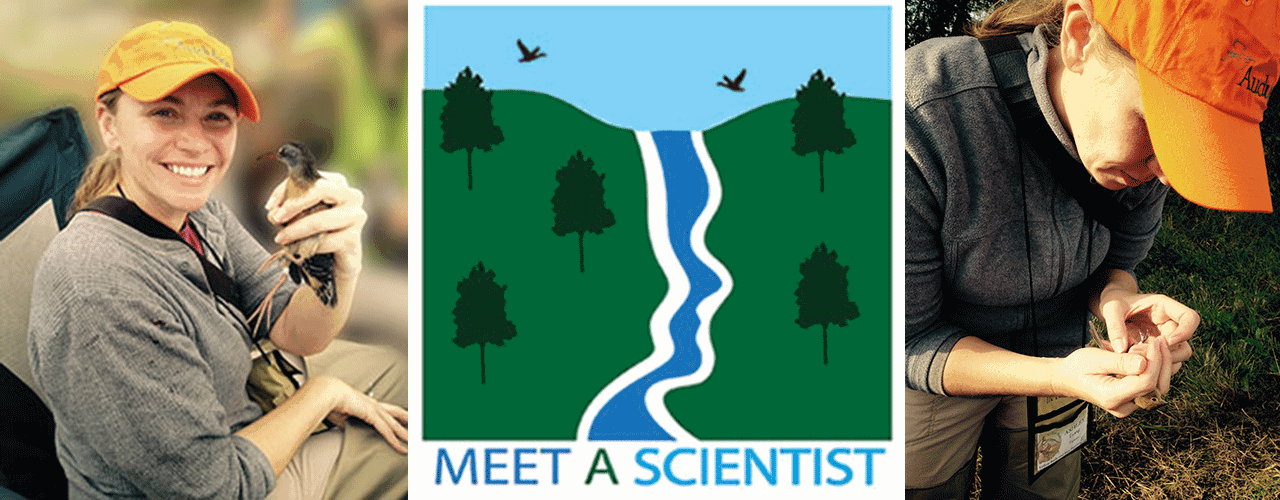Meet a scientist: Ashley Long
Based on her extensive avian research record, one might assume Dr. Ashley Long, Texas A&M Institute of Renewable Natural Resources (IRNR) research scientist, has been fascinated with birds her whole life. However, Long’s interest in ecology and wildlife didn’t begin until she was in college.
“Science was not on my radar during the first two years of college,” she said. “I initially went to school for business, and I absolutely hated it.”
After attending a four-year university for one semester, Long went to Highland Community College in Illinois and enrolled in an ecology course to fulfill one of her general education requirements.
“One day the professor got up and announced that he was looking for someone who wanted a work study job,” she said. “I really needed the money, so I said I’d do it.”
The position initially consisted of preparing study skins for the ecology lab. Even though she had no experience in ornithology, it proved to be a fundamental introduction to her career as a research scientist.
“It ended up being more than skinning birds,” she said. “My professor was one of those people who really engaged his students. He asked what you were interested in and encouraged us to do supplemental projects for our classes.”
With the help of her professor, Long earned scholarships from the Northwest Illinois Audubon Society to take field ornithology, and she traveled across North America on bird-watching trips. For Long, a native of the upper Midwest, her visit to Big Bend National Park in Texas was a particularly “magical” experience filled with unique landscapes and exotic birds.
“It’s a beautiful place,” she said, reflecting on the park. “We saw things I had never seen before in my life — like roadrunners and painted buntings — it was a really memorable trip.”
After hiking in Big Bend from the flat, open desert into the Chisos Mountains and seeing the diverse array of species, she realized her professional interest lay in ecology and wildlife. “I had no idea what I wanted to do, but I knew that this was the direction I wanted to go in.”
Long earned her bachelor’s in biology from Northland College in Wisconsin and went on to earn her master’s in biological sciences from Emporia State University in Kansas, though she conducted her avian research in the Texas Panhandle. Prior to joining IRNR, Long earned her doctorate from Texas A&M University and conducted her dissertation research on the influence of vegetation structure and composition on the abundance and productivity of the federally endangered golden-cheeked warbler.
At IRNR, Long studies avian responses to vegetation management, development and natural landscape alterations. Her current research focuses on the natural and anthropogenic factors that drive species distributions and wildlife population dynamics.
For example, some of her major projects include studying the influence of road construction and military activities on songbirds. She is also examining the compatibility of fire management and endangered species protection and is helping to develop the IRNR Texas Land Trends program.
She often compares different conservation strategies and tools in an effort to help landowners and land managers identify the best practices given their current conditions.
“In the past I’ve examined how different burning treatments influence birds,” she said. “While fire can have a negative connotation, a lot of species are actually fire-dependent, and prescribed burning can be an effective method for shrub control and landscape-level management when used correctly.”
Understanding complex interactions between species and environments and the potential influence of humans on wildlife populations are a critical part of Long’s projects, particularly when it involves implementing potential solutions for conservation or management.
“One of the difficult parts about my job is determining the actual versus perceived effects that humans have on wildlife,” she said. “In some cases we may think humans are playing a really detrimental role for wildlife populations and they’re not, and in other cases we think humans are having no effect and they are.”
Long said the complexity and problem-solving aspects of her research are also what she loves most about her work. “You have to work with a team to develop ideas and figure out strategies. You go through the process, and nine out of the ten things you come up with don’t work, then you find something that does,” she said. “That process can be exciting and a lot of fun.”
More information about Long and her work can be found on her staff page.



